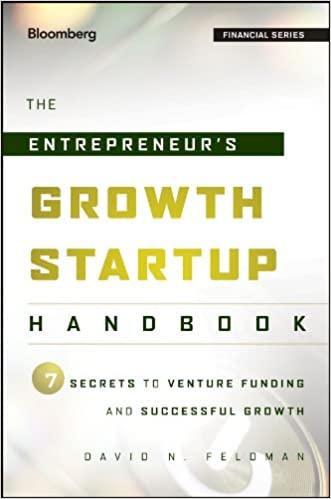


Markov Manufacturing recently spent $19.9 million to purchase some equipment used in the manufacture of disk drives. The firm expects that this equipment will have a useful life of five years, and its marginal corporate tax rate is 40%. The company plans to use straight-line depreciation. a. What is the annual depreciation expense associated with this equipment? b. What is the annual depreciation tax shield? c. Rather than straight-line depreciation, suppose Markov will use the diminishing value depreciation method for the five-year life of the property (using a depreciation rate of 40%). Calculate the depreciation tax shield each year for this equipment under this accelerated depreciation schedule. d. If Markov has a choice between straight-line and diminshing value depreciation schedules, and its marginal corporate tax rate is expected to remain constant, which schedule should it choose? Why? e. How might your answer to part d change if Markov anticipates that its marginal corporate tax rate will increase substantially over the next five years? a. The annual depreciation expense is $ million. (Round to three decimal places.) b. The annual depreciation tax shield is $ million. (Round to three decimal places.) million. (Round to three decimal c. If Markov uses the diminishing value depreciation method for the five-year property, the depreciation tax shield for year 1 is $| places.) The depreciation tax shield for year 2 is $ million. (Round to three decimal places.) The depreciation tax shield for year 3 is $ million. (Round to three decimal places.) The depreciation tax shield for year 4 is $ million. (Round to three decimal places.) The depreciation tax shield for year 5 is $ million. (Round to three decimal places.) d. If Markov has a choice between straight-line and diminishing value depreciation schedules, and its marginal corporate tax rate is expected to remain constant, which should it choose? Why? (Select the best choice below.) A. With diminishing value, the firm receives the depreciation tax shields sooner. Thus, diminishing value depreciation leads to a higher NPV of Markov's FCF. B. The straight-line depreciation is recommended only for assets that last more than 5 years. C. With either method, the total depreciation tax shield is the same. Therefore, it does not matter which method is used. D. With straight-line depreciation, the firm's depreciation expenses are lower initially, leading to higher earnings. Thus, straight-line depreciation leads to a higher NPV of Markov's FCF. e. How might your answer to part d change if Markov anticipates that its marginal corporate tax rate will change substantially over the next five years? (Select the best choice below.) O A. The straight-line depreciation is recommended only for companies whose tax rates are higher than 40%. B. Markov may be better off using the straight-line method if it expects its tax rate to decrease substantially in later years. C. Even if its tax rate is expected to change, Markov is better off using diminishing value depreciation rather than straight-line depreciation. D. Markov may be better off using the straight-line method if it expects its tax rate to increase substantially in later years









